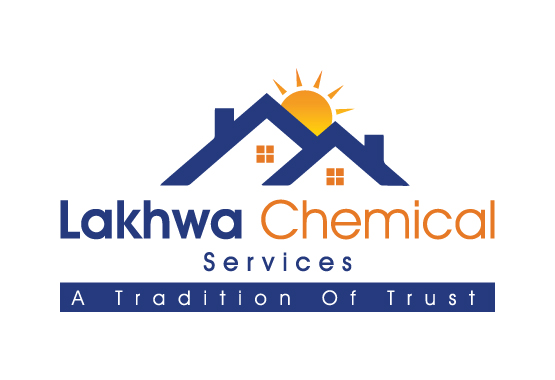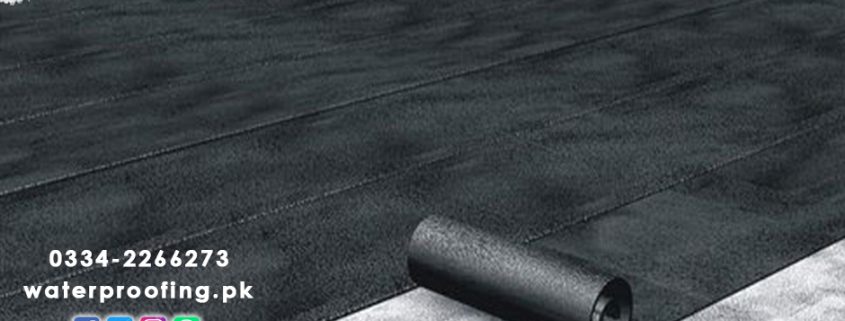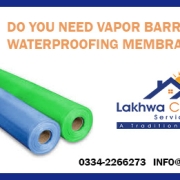Environmental Conditions Installing A Waterproofing Membrane
Membrane Waterproofing: Environment and waterproofing has a deep connection, much like that of day and night. How is it so? Comprehend the detail from Lakhwa Chemical Services experts: They can elucidate the link explicitly and provide key solutions.
- In overcast conditions, water and heat proofing should not be applied, especially on the rooftop.
- High surface temperature can cause spalling, surface crazing, and rework.
- In areas with high-density soil, foundation waterproofing is a must.
The curing process takes 24-72 hours for completion. To ensure its effectiveness, understand and acknowledge the environmental factors.
- Ambient Temperature
- Air Flow
- Humidity
- Moisture Content
- Substrate Temperature
Let’s discuss each factor in detail.
Ambient Temperature
Most membranes have an ideal drying/curing temperature. In addition, the minimum atmospheric temperature should lie between 45 to 50 degrees Fahrenheit. Freezing conditions can spall the coating while hot climate can cause Flash Drying.
When there are strong winds and clear skies, the membrane (internal parts) cannot release the moisture before the top layers are dry, causing a situation where the membrane appears to be damp-free and will re-emulsify on contact with water.
In such situations, it’s better to apply multiple thin layers rather than thick layers.
Read More
How much water damage repair service cost in Pakistan?
How does waterproofing help as a seepage solution in Karachi?
The science behind white color in roof heat proofing in Pakistan
Air Flow
Sufficient air flow is important to ensure quick drying. Technically, as the air velocity increases, the object surface transfer coefficient also surges, resulting in moisture transfer. The object’s drying rate increases with high temperatures. In case of a closed room with low ventilation, stale air is the likely cause of a non-drying membrane.
To cover this issue, you can have an alternate air source, such as a pedestal or ceiling fan. The windows or doors can also be kept open.
Humidity
Atmospheric moisture or humidity is a concern for water-based products; the release of moisture from the membrane is a prerequisite for the curing process to complete. Most water-based membrane times are tested with a humidity of 50%. Higher levels will reduce the drying or curing time.
Thin coats and adequate airflow is necessary in places where high humidity is present.
Substrate Moisture Content
The substrate’s moisture content has two different effects on water-based and solvent-based membranes:
The solvent-based membrane can be difficult to apply without an adhesive, i.e., epoxy or primer.
The water-based membrane will dry at a slow pace if the substrate has moisture.
In case of screeds, it is essential to dry it before applying the waterproofing membrane. If the process needs to be quickened, adding a cement component into the epoxy vapor barrier coating will work. In other words, it will prevent membrane failure.
Substrate Temperature
Together with substrate moisture content, substrate temperature also plays a pivotal role in membrane application. The air and substrate temperatures should be proximate for a strong and long-lasting adhesion. Ensure that proper time is provided to the membrane for curing. You can delay work if the conditions are overcast.
Read More
Best ways to apply Heat Reflective Roof Paint in Pakistan
List of benefits using Roof Cool Services in Karachi
How waterproofing company provides Roof Leakage Repair in Hyderabad?
Concerns for Selecting a Waterproofing System
There are numerous considerations that a waterproofing designer or construction expert must comprehend before selecting a waterproofing system. Some aspects are:
- Water table
- Soil
- Substrate stability
- Construction sequence
- Occupancy
- Track record
- Ease of application
Water table is an essential factor that determines the requirement of waterproofing. The groundwater should be maintained at 6 in. below the slab.
Soil contamination can affect the waterproofing process in various ways: Chemicals, such as acids and alkalis can increase the worsening of concrete and steel reinforcing bars. Salt can corrode the bars too.
Substrate waterproofing should be long-lasting and durable. Apart from that, membranes should be elastic and capable of resealing. Lastly, damp-proofing is not advisable for crack-prone substrates.
The membrane or coating must be applied by experts well-versed in different techniques and materials, such as bitumen, polyurethane, acrylic, and more. The application process can be a determining factor in material selection.
Conclusion
The understanding of environment and its implications is essential for a waterproofing expert. Connect with Lakhwa Chemical Services today and select from a wide variety of processes.





Leave a Reply
Want to join the discussion?Feel free to contribute!